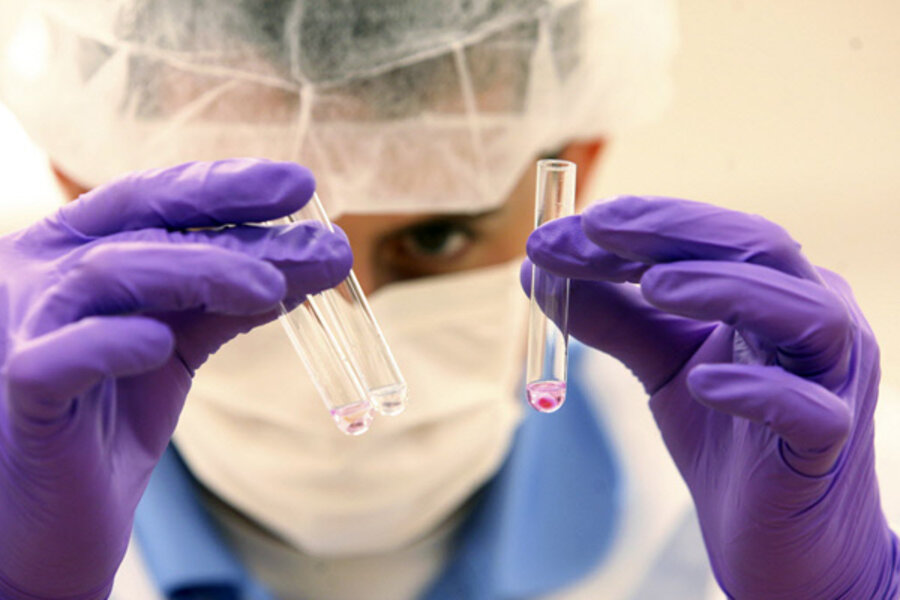DNA evidence: New York law would be first to add all criminals to DNA database
Loading...
| ALBANY, N.Y.
Gov. David Paterson has proposed roughly doubling New York's DNA database to include samples from even low-level offenders, making it the first in the nation to so broadly collect and use this evidence to solve crimes and exonerate people wrongly convicted.
New York's law would require adding about 48,000 samples a year to a laboratory system that state officials say is capable of handling the extra work, with no current backlogs.
"You think it'd be a huge explosion, but we have samples on so many people that recommit crimes already — it's the old rule of criminals don't specialize," said Sean Byrne, acting commissioner of the Division of Criminal Justice Services.
State police now have DNA samples from 356,000 people convicted of felonies and certain misdemeanors, including petty larceny and endangering the welfare of a child. The database began in 1996 with the genetic material from killers and sex predators, and has been expanded three times.
The governor's plan has drawn support from a law school center involved in efforts nationwide to use DNA evidence to reverse wrongful convictions. But the New York Civil Liberties Union said the latest proposed expansion raises many questions, including about protection of privacy rights, and should be given further study.
Paterson said it would cost about $1.6 million more annually for state police to increase data collection to get a complete list of New York criminals' DNA, adding many other misdemeanors.
"DNA is the most powerful tool ever discovered to solve crimes, prevent crimes and exonerate the innocent, but remarkably in New York State we are still collecting DNA from only 46 percent of the criminals convicted," he said.
Former Gov. Eliot Spitzer first proposed the idea in 2007 but it did not win legislative approval.
The Assembly has twice passed broader legislation sponsored by Democratic Assemblyman Joseph Lentol, calling for the collection of DNA in all crimes as well as requiring videotaping of police interrogations, both measures meant to help prevent wrongful convictions.
"As long as we have the innocent guy in prison, the guilty guy is going around committing crimes willy-nilly," Lentol said.
In the Senate, similar DNA bills have been introduced, including one by Sen. Eric Schneiderman, a Manhattan Democrat who is running for attorney general.
"We're certainly confident there will be an expansion of the DNA data bank," said Schneiderman spokesman James Freedland.
DNA currently is not collected in most misdemeanors — some 53 percent of all convictions, said Warren County District Attorney Kate Hogan, president of the state District Attorneys Association, which supports the expansion.
Robert Perry, New York Civil Liberties Union legislative director, said there are issues with privacy and the rights of defendants to due process — and that an independent analysis is needed first. He said problems from putting the DNA of thousands more people into the data bank include the risk of degraded samples, human error in testing labs and even intentional fraud.
"The complexity and importance of the issues raised by the proposal to expand the state's DNA data bank — issues of law, science and public policy — are matched only by the indifference of lawmakers," Perry said.
Through April 30, there were 7,825 positive matches against the state's data bank, including 137 homicide convictions and 453 sexual assaults, according to the criminal justice department.
Since 2006, among those convicted of petty larceny, 652 have been linked to other crimes, including 170 sexual assaults, 72 robberies and 31 homicides.
Over the past two decades, there have been 254 post-conviction DNA exonerations in the United States, according to the Innocence Project. The nonprofit legal clinic, associated with New York's Cardozo Law School, encourages use of DNA evidence to overturn convictions.
It is part of a network of nearly 61 legal clinics, 52 of them in the U.S., doing similar work. The project has 214 active cases, with 8,000 under evaluation, and to date has looked at 36,000 and taken 1,250 as clients, spokeswoman Emily Whitfield said.
Rob Warden, executive director of the Northwestern University Law School Center on Wrongful Convictions, part of the network, said he supports New York expanding its DNA database. "What we all hope is getting this right," he said.
The New York State Police lab processes offender DNA samples, while it and seven other accredited labs statewide process DNA from crime scenes, Byrne said.
He said the average offender who made a first DNA submission last year had five prior convictions.
Retired cold case detective Joseph Pollini of the New York Police Department said requiring all criminals to submit DNA would be a huge help because most commit smaller offenses before committing a major crime.
____
Associated Press writer Bonny Ghosh contributed to this report.
RELATED:





